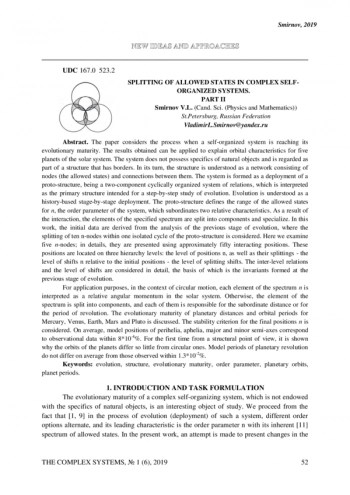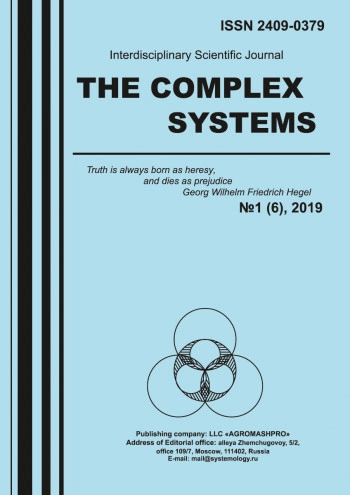The paper considers the process when a self-organized system is reaching its evolutionary maturity. The results obtained can be applied to explain orbital characteristics for five planets of the solar system. The system does not possess specifics of natural objects and is regarded as part of a structure that has borders. In its turn, the structure is understood as a network consisting of nodes (the allowed states) and connections between them. The system is formed as a deployment of a proto-structure, being a two-component cyclically organized system of relations, which is interpreted as the primary structure intended for a step-by-step study of evolution. Evolution is understood as a history-based stage-by-stage deployment. The proto-structure defines the range of the allowed states for n, the order parameter of the system, which subordinates two relative characteristics. As a result of the interaction, the elements of the specified spectrum are split into components and specialize. In this work, the initial data are derived from the analysis of the previous stage of evolution, where the splitting of ten n-nodes within one isolated cycle of the proto-structure is considered. Here we examine five n-nodes; in details, they are presented using approximately fifty interacting positions. These positions are located on three hierarchy levels: the level of positions n, as well as their splittings - the level of shifts n relative to the initial positions - the level of splitting shifts. The inter-level relations and the level of shifts are considered in detail, the basis of which is the invariants formed at the previous stage of evolution.
For application purposes, in the context of circular motion, each element of the spectrum n is interpreted as a relative angular momentum in the solar system. Otherwise, the element of the spectrum is split into components, and each of them is responsible for the subordinate distance or for the period of revolution. The evolutionary maturity of planetary distances and orbital periods
Сайт https://scinetwork.ru (далее – сайт) работает по принципу агрегатора – собирает и структурирует информацию из публичных источников в сети Интернет, то есть передает полнотекстовую информацию о товарных знаках в том виде, в котором она содержится в открытом доступе.
Сайт и администрация сайта не используют отображаемые на сайте товарные знаки в коммерческих и рекламных целях, не декларируют своего участия в процессе их государственной регистрации, не заявляют о своих исключительных правах на товарные знаки, а также не гарантируют точность, полноту и достоверность информации.
Все права на товарные знаки принадлежат их законным владельцам!
Сайт носит исключительно информационный характер, и предоставляемые им сведения являются открытыми публичными данными.
Администрация сайта не несет ответственность за какие бы то ни было убытки, возникающие в результате доступа и использования сайта.
Спасибо, понятно.




